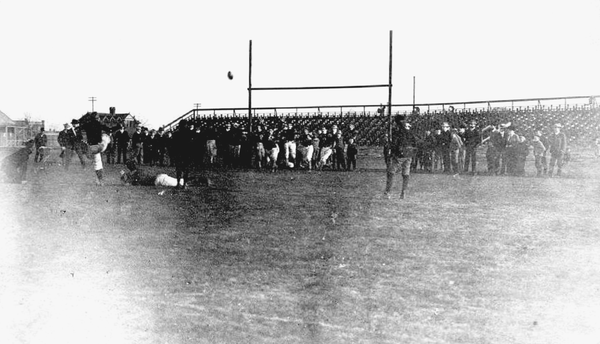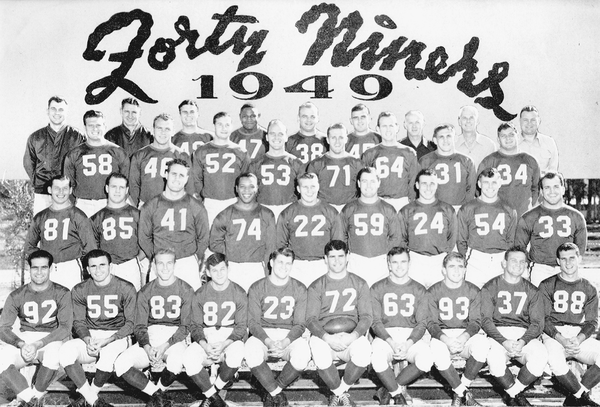On January 15, 1967, the Green Bay Packers played the Kansas City Chiefs in the first ever Super Bowl. The game, which took place at the Los Angeles Memorial Coliseum, marked the beginning of what would evolve into a staple of American culture. Every year, over 100 million fans tune in to watch the top teams from the NFC and the AFC square off to determine the best team in the country. From rivalries to broken deals to wild superstitions, we’re examining the events that shaped the Super Bowl into today’s fan favorite.
The History of the Game
In Canton, Ohio in the fall of 1920, a group of men gathered to discuss the prospect of starting a nationwide league for professional football players. Originally known as the American Professional Football Association (APFA), it was later renamed the National Football League (NFL) in 1922. The league’s first president was James Thorpe, who is widely credited with building the league’s reputation, and setting it on a successful path for widespread public popularity. Prior to this, football games considered “professional” had mostly been held at the state or local level. The NFL thrived for its first few decades, witnessing an increased interest from the public, games with massive crowds, and the development of fan bases. The league had 10 teams when it was first formed, and by 1960, there were 14.
However, in 1960, as the NFL was ringing in its 40th successful year, it was met with a new rival: the American Football League (AFL). Formed by a group of businessmen who wanted to start a football team, but were dismissed by the NFL, the AFL proved a different competitor than the NFL had seen before. In the past, smaller leagues had attempted to coalesce, but were largely shut out by the NFL which dominated the industry. The AFL’s success came from signing players that had been rejected by the NFL. These players proved to be as talented and well-equipped as those in the NFL.

After only a few years into the AFL’s tenure, the two sides were fighting against each other to get the best players right out of college. They agreed not to sign players that already had a contract with the other side, but this shattered when the New York Giants of the NFL signed a player from the AFL’s Buffalo Bills. The AFL retaliated by signing several contracted NFL players, including eight of their top quarterbacks. In 1966, the leagues finally agreed to a deal, which allowed them to share a common draft and merge into a single league after the 1969 season. Additionally, within this agreement was an AFL-NFL Championship Game that would take place every year, and put the best team from both leagues head-to-head.
Tickets for this first game were sold at a slim $12. The first Super Bowl was the only one that didn’t entirely sell out, and was also the only Super Bowl to be duel-broadcasted on NBC and CBS. While today we’ve become accustomed to elaborate halftime performances, the first Super Bowl invited popular marching bands from the University of Arizona and Grambling State University to play at its halftime show. There to accompany the bands were 300 pigeons, 10,000 balloons, and a demonstration of the Bell Rocket Air Men who flew through the air propelled by hydrogen peroxide.
The Super Bowl Today
The first Super Bowl in 1967 was modest compared to today’s celebrations. For starters, fans today will pay anywhere from $3,000 – $5,000 for a ticket to the big game. The Super Bowl is broadcasted to over 170 countries, and is one of the most-watched annual sporting event in the world. Internationally famed artists like Michael Jackson, Lady Gaga, Bruce Springsteen, and Coldplay have all had the chance to play at the coveted halftime show.

Today’s brands also put enormous effort into the advertisements run during the game’s commercial breaks. The hilarious, relevant, and sometimes touching slant they take is familiar to yearly Super Bowl watchers. To run one of these 30-second ads on prime time television during the Super Bowl will cost a company around $5 million.
Die-hard fans most likely have a few superstitions they carry with them to the game. They can be caught wearing unwashed jerseys or socks from winning seasons, watching the game with the same people who have inspired luck throughout the season, or perhaps sitting in the same bar, chair or couch as one has watched most other games. There is also a decades old tradition of the United States President predicting who will win the game.
The Super Bowl has now become a household name in American culture. It offers fans an opportunity to gather around a television set with their friends to eat, drink, and cheer on their favored team. The game today has evolved to be a display of athletic competition, musicians, and the dedication of unwavering fans, but at its roots is the rivalry that inspired the competition decades ago.
Little-Known Facts about the Super Bowl
- Due to restrictions on advertising, the NFL actually regulates the use of “Super Bowl” in advertisements. This forces companies to use alternative names like the “Big Game.”
- The winning team receives the Vince Lombardi trophy, named after the coach of the Green Bay Packers who won the first two Super Bowls.
- Roman numerals are used to name each Super Bowl because the football season runs into two calendar years, so instead of categorizing each game by the year in which it was played, they are counted by Roman numerals.
- The Super Bowl had never gone into overtime until the 2017 game – Super Bowl LI.
- The Pittsburgh Steelers have six Super Bowl wins – the most of any team in the NFL.
- The AFC is the “home” team for odd-numbered Super Bowls, while the NFC is the “home” team for the even-numbered.

